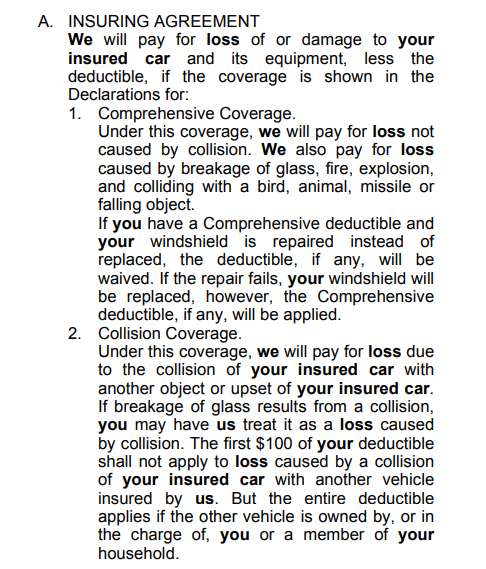What Does Pacific Prime Do?
What Does Pacific Prime Do?
Blog Article
Some Known Factual Statements About Pacific Prime
Table of ContentsThe Ultimate Guide To Pacific PrimeSome Of Pacific PrimeThe 4-Minute Rule for Pacific PrimeThe Buzz on Pacific PrimeWhat Does Pacific Prime Mean?

This is because the information were gathered for a period of solid financial performance. Of the estimated 42 million individuals that were uninsured, all however about 420,000 (regarding 1 percent) were under 65 years old, the age at which most Americans end up being qualified for Medicare; 32 million were grownups in between ages 18 and 65, about 19 percent of all adults in this age team; and 10 million were children under 18 years of age, regarding 13.9 percent of all youngsters (Mills, 2000).
These estimates of the variety of persons uninsured are produced from the yearly March Supplement to the Present Population Study (CPS), conducted by the Census Bureau. Unless or else noted, national quotes of individuals without wellness insurance coverage and percentages of the populace with various kinds of insurance coverage are based upon the CPS, one of the most widely made use of resource of price quotes of insurance policy protection and uninsurance rates.
Pacific Prime for Dummies

Still, the CPS is particularly beneficial due to the fact that it produces annual quotes fairly quickly, reporting the previous year's insurance policy protection approximates each September, and since it is the basis for a regular set of estimates for greater than 20 years, enabling evaluation of patterns in protection with time. For these factors, in addition to the comprehensive use the CPS in other researches of insurance policy coverage that are offered in this report, we rely upon CPS estimates, with constraints noted.

The quote of the number of without insurance people broadens when a populace's insurance condition is tracked for several years. Over a three-year duration starting early in 1993, 72 million people, 29 percent of the U.S. https://filesharingtalk.com/members/594499-pacificpr1me. population, were without insurance coverage for a minimum of one month. Within a solitary year (1994 ), 53 million people experienced at the very least a month without protection (Bennefield, 1998a)
6 out of every 10 without insurance adults are themselves employed. Working does boost the likelihood that one and one's household participants will have insurance, it is not an assurance. Even members of households with two permanent wage earners have nearly a one-in-ten opportunity of being uninsured (9.1 percent uninsured price) (Hoffman and Pohl, 2000).
A Biased View of Pacific Prime
New immigrants make up a considerable proportion of individuals without medical insurance. One analysis has associated a substantial portion of the recent development in the dimension of the united state uninsured population to immigrants that arrived in the country between 1994 and 1998 (Camarota and Edwards, 2000). Current immigrants (those that pertained to the United States within the previous 4 years) do have a high price of being without insurance (46 percent), however they and their youngsters account for just 6 percent of those without insurance country wide (Holahan et al., 2001).
The connection in between medical insurance and accessibility to care is well developed, as recorded later on in this chapter. Although the partnership in between health and wellness insurance and health end results is neither straight nor straightforward, a comprehensive scientific and health and wellness services study literary works links medical insurance protection to improved access to care, far better top quality, and enhanced personal and population health standing.
Degrees of evaluation for examining the results of uninsurance. It focuses particularly on those without any health and wellness insurance policy for any type of size of time.
Fascination About Pacific Prime
The issues dealt with by the underinsured remain in some aspects similar to those dealt with by the uninsured, although they are typically less severe. group insurance plans. Uninsurance and underinsurance, however, involve clearly various plan concerns, and the methods for resolving them may differ. Throughout this study and the five records to comply with, the primary focus gets on persons without any health and wellness insurance coverage and therefore no help in paying for health care past what is readily available via charity and safeguard institutions
Health insurance is an effective element affecting invoice of treatment because both individuals and physicians react to the out-of-pocket cost of solutions - https://www.openlearning.com/u/freddysmith-sba6sp/. Wellness insurance, however, is neither required nor sufficient to gain accessibility to clinical services. The independent and straight effect of health insurance policy protection on access to health solutions is well established.
Others will hop over to these guys get the wellness care they require even without medical insurance, by paying for it expense or seeking it from providers that provide care cost-free or at extremely subsidized prices. For still others, health insurance policy alone does not make sure receipt of treatment as a result of other nonfinancial obstacles, such as a lack of healthcare companies in their neighborhood, restricted accessibility to transportation, illiteracy, or etymological and cultural distinctions.
Pacific Prime - An Overview
Official study concerning without insurance populations in the USA dates to the late 1920s and very early 1930s when the Board on the Cost of Medical Care created a collection of records concerning funding physician office sees and hospital stays. This issue became salient as the varieties of clinically indigent climbed up during the Great Clinical depression.
Report this page